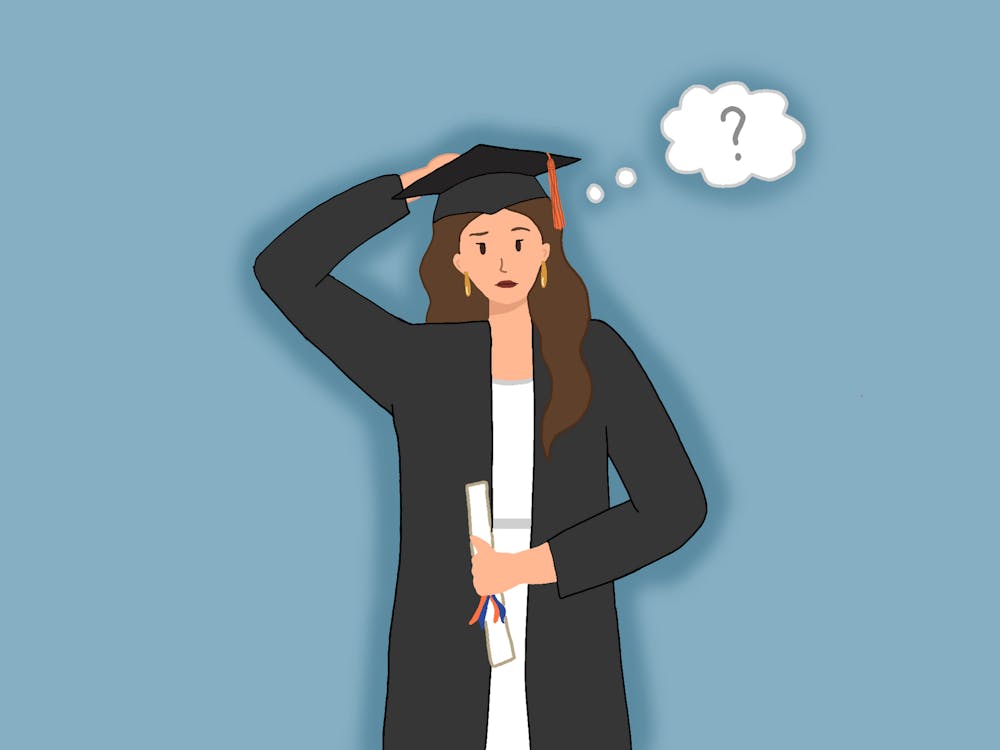"What do we want? A living wage! When do we want it? Now." Pounding on drums, waving their fists and marching around Madison Hall, the "living wage" protestors were quite a sight this past weekend. Some people attended, ignited with joy for what they perceive to be a good cause. Others walked by wordlessly in dissent or drove by without honking, secretly turned off by the protesters for a wide variety of reasons. But for interested observers, one cannot help but indulge in a historical comparison. While the academic value is debatable (and worthy of a book, rather than a column), superficially comparing the "living wage" movement with the civil rights movement certainly provides interesting conclusions.
First, one might note that the living wagers, like their civil rights predecessors, have chosen non-violence as their weapon. During the civil rights movement, for example, students would sit in at segregated lunch counters demanding to be served. By sitting in at a segregated lunch counter, the only law they broke (and thus protested) were unfair segregation laws. They did not stay at these lunch counters after hours -- merely during hours to protest segregation.
In contrast, the living wagers have engaged in breaking laws irrelevant to their cause. They could have just as easily protested outside or resumed their sit-in Monday morning. To be sure, their decision was purely practical but in this, they broke from the general employment of non-violent protest in the civil rights movement (at least as it is popularly remembered).
Most interesting, however, is the seemingly recurring theme in history: Authorities are utterly incapable of handling non-violent protest. In Birmingham, Ala., Chief of Police Bull Connor reacted belligerently to the non-violent protestors. Rather than engaging them peacefully, Connor's police force unleashed dogs, used absurdly powerful water hoses and beat protestors, all while the cameras were rolling. Effectively nationalizing the movement and galvanizing half-hearted supporters, Connor was perhaps rightly dubbed one of the strongest assets of the civil rights movement.
The University administration has, in relation to the level of protests, employed similarly absurd and unpalatable tactics. Their complete inability to foresee the consequences of their actions is both disheartening (especially since they make crucial decisions for our school everyday) and probably their Achilles heel. Even if they had tactical or philosophical reasons for doing so, cutting off food and homework to protesting students is neither morally acceptable nor a decent public relations strategy. What happened as a direct result? Food piled on the steps of Madison Hall, and even the non-History majors wondered aloud, "Isn't this kind of like the Berlin Wall?"
Then, even before I could write a clever Tuesday column proclaiming, "Mr. Casteen, tear down this wall!" the students are arrested using unnecessary trickery. After Brand New has hit the stage at UPC's (wonderfully handled) Springfest event, the University arrests all 17 students. This is after Assistant Dean of Students Aaron Laushway was quoted in The Cavalier Daily saying, "It has never been our intention for our students to be arrested. We have respected their right to protest."Rather than allowing the students to sit peacefully, the administration, incapable of making decisions under fire, turned the protest into something worthy of national news. Indeed, it was shortly thereafter that fire chief and Vietnam veteran Julian Taliaferro e-mailed John T. Casteen, III asseverating, "I personally think that the University of Virginia should be ashamed."
If it were possible to indulge in sarcastic claps in a column, I would certainly enjoy one right now. The best way for the University to handle this issue is and always has been clear: Allow the students to protest (remember that student self-governance talk you force us to sit through?) and engage them like adults, rather than through condescending letters and legal reasoning unworthy of bonobos. Provide the students with some good ol' Southern hospitality and if they want to sit their all weekend, nay, all week or even all month, then allow them to. A war of attrition means dissipating media interest and an eventual victory for those most patient. By contrast, harsh tactics such as arresting protestors make for Washington Post publicity, as seen in yesterday's Metro section.
The degree to which this situation resembles the civil rights movement is irrelevant, but the similarities are nonetheless striking (as pointed out by none other than Julian Bond). The students need not worry about their strategies because the University has made it abundantly clear that for every tactical oversight made by the students, it plans at least two or three major blunders of its own (not unlike the authorities in the civil rights movement). As I read for my History of the Civil Rights Movement class, I can't help but notice similarities and differences (please, resist the temptation to e-mail me nuanced exceptions). One piece of advice for the University, before it's too late: Keep the dogs on their leashes.
Sina Kian's column appears Tuesdays in The Cavalier Daily. He can be reached at skian@cavalierdaily.com.






